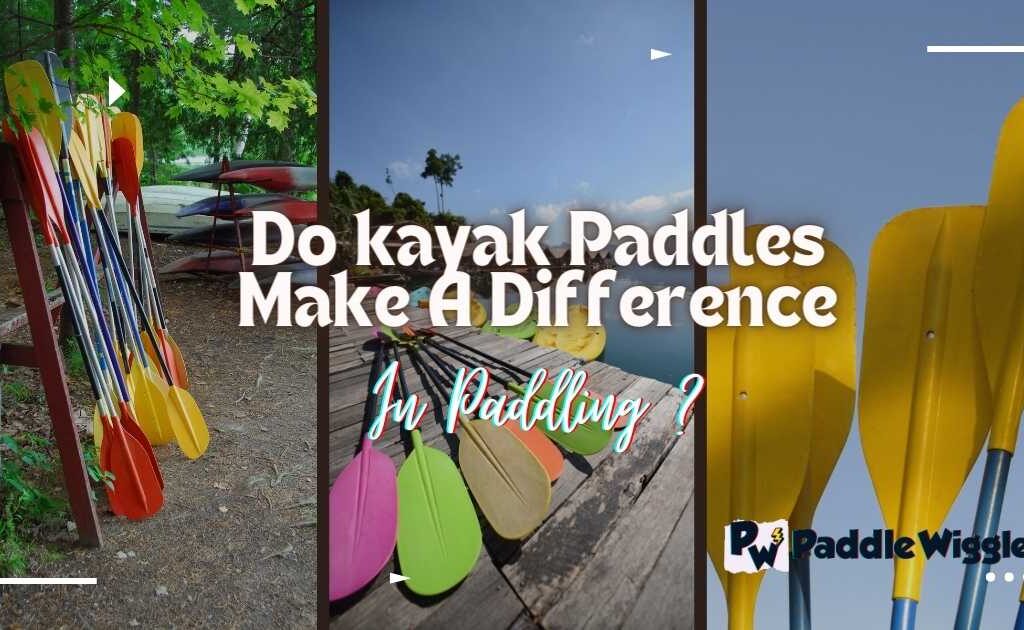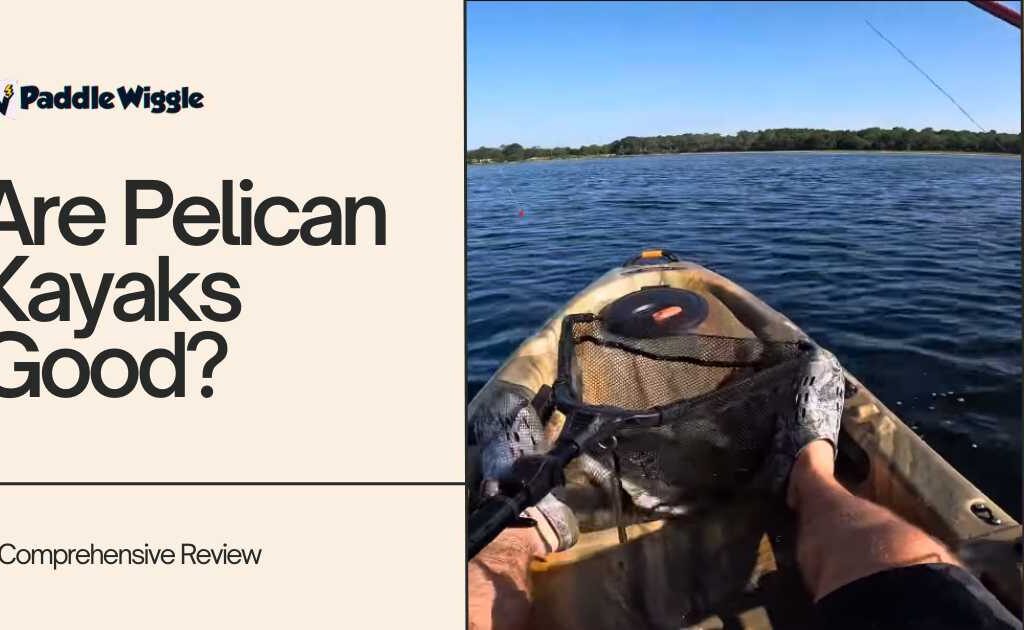Kayaking for long expeditions can be a thrilling and rewarding experience. It allows you to explore vast stretches of water, encounter breathtaking scenery, and challenge yourself physically and mentally.
But how long does it take to kayak 10 miles? And the answer depends on several factors.
On average, an experienced kayaker can cover a distance of around 2 to 3 miles per hour. So, if we consider an average speed of 2.5 miles per hour, it would take approximately 4 hours to kayak 10 miles.
This estimation is based on average casual kayaking speed. And the actual time may vary depending on your paddling speed, water condition, and other factors.
Additionally, weather conditions play a vital role in kayaking. Wind, waves, and currents also affect the speed and duration of your kayaking adventure.
Let’s explore the factors that can influence the time it takes and give you an idea of what to expect.
Contents
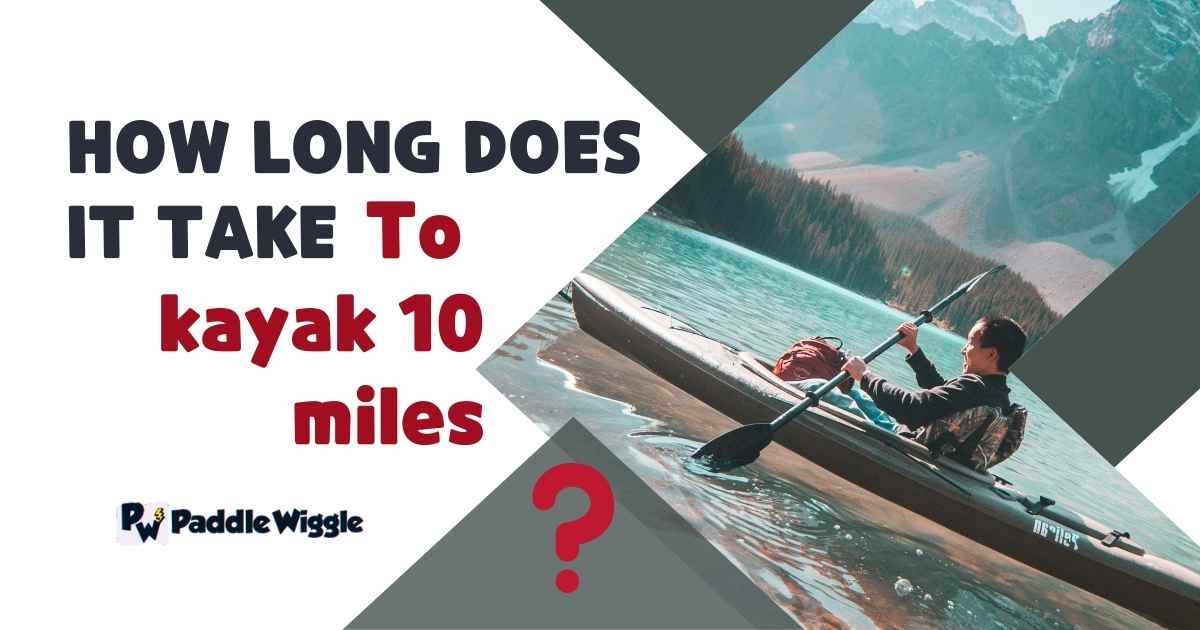

Calculate Speed And Time For Kayaking Expeditions
Calculating how fast you go and how long it takes during a kayaking trip is important for planning better and staying on track. Let’s break it down into simple steps and talk about the things to keep in mind.
Rule of Thumb: How to Calculate Your Speed?
First, you’ll need a tracking device.
To find out how fast you’re going, divide the distance you travel by the time it takes. For example, if you kayaked 5 miles in 2 hours, your speed would be 2.5 miles per hour (5 miles divided by 2 hours).
This tells you how quickly you’re covering a specific distance. It’s helpful for planning how long it will take to reach your destination or finish a planned route.
Additionally, there are tracking apps available, such as “Savvy Navvy” that can assist you in calculating your speed. This app uses GPS technology to track your location, distance, and speed during your kayaking trips.
And most sea kayakers use GPS for their kayaks. It’s a good addition to monitoring their performance and making informed decisions on longer trips.
Remember, safety should always come first, No matter how fast or slow you go.
How Fast Can People Kayak?
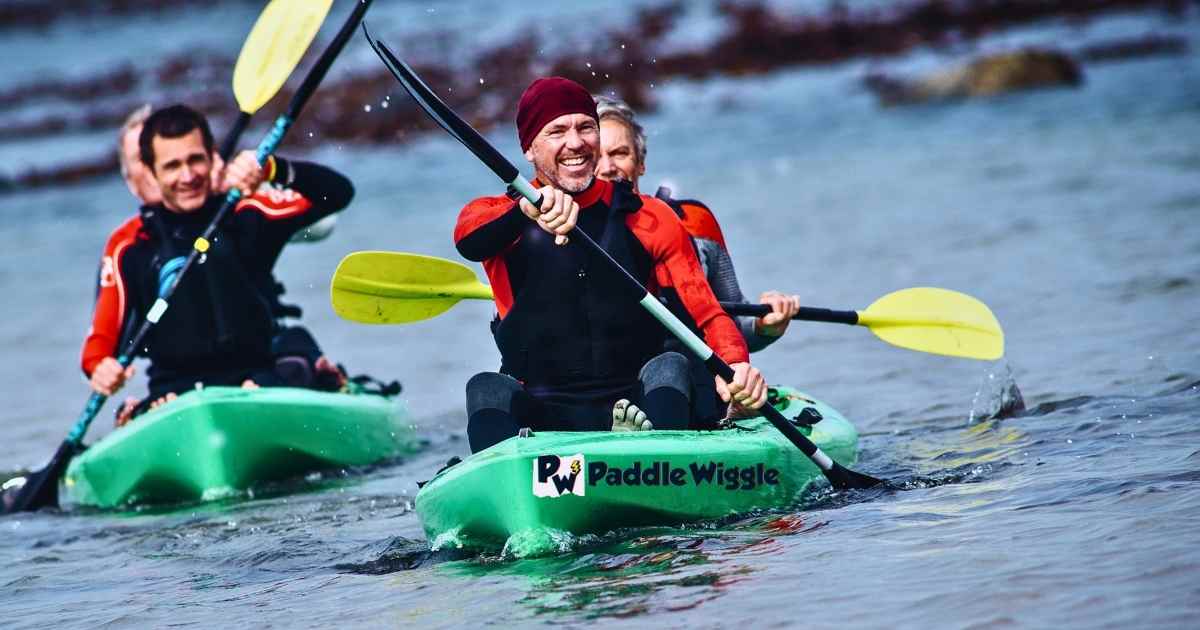

Different people kayak at different speeds. On average, most kayakers go about 2 to 3 miles per hour. But experienced paddlers can go even faster, around 3 to 4 miles per hour. It all depends on how skilled you are and what you want to do.
Fact: In 2019, Sebastian Szubski kayaked the farthest distance in 24 hours. He covered 156 miles at a speed of 6.5 miles per hour. That’s a world record!
What Affects How Long It Takes?
Several things can affect how long your trip will take. First, think about how far you want to go. The more distance you cover, the longer it will take to get there. Next, consider the weather conditions. Wind, waves, and currents can speed you up or slow you down.
It will take longer if you have to paddle against strong winds or rough waters. But if you have wind and currents on your side, you’ll go faster.
Also, think about breaks and stops along the way. Taking breaks to rest, eat, or explore the surroundings will add extra time to your expedition. Lastly, your physical fitness matters. If you’re in good shape and have experience, you can paddle faster and for longer periods. But you might need more time if you’re new to kayaking or not as fit.
Unraveling Kayaking Speed: Factors in a 10-Mile Expedition
When you go on a 10-mile kayaking trip, there are many things that can make you go faster or slower. Let’s look at the important stuff that can affect how fast you paddle during your exciting adventure.
The Way You Paddle
The way you paddle is super important for going fast. Check out these cool factors that can affect your speed in a 10 miles expedition:
Powerful Strokes: Making Each Paddle Count
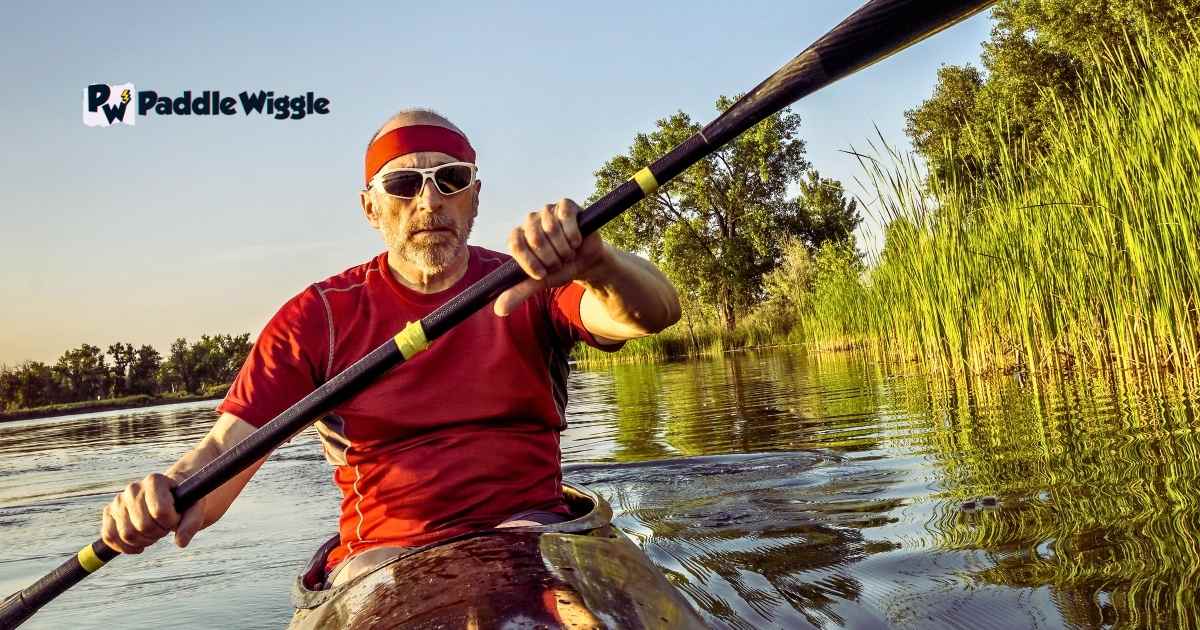

To go faster, you need to paddle in a smart way. Try rotating your body with each stroke and using your big muscles. This will give you more power and help you move through the water faster. Cool, huh?
Body Balance: Staying Stable and Energized
Keeping your body in the right position is key to staying steady and not getting tired quickly. Sit up straight, hold the paddle comfortably, and distribute your weight evenly in the kayak. By doing these things, you’ll use less energy and be able to paddle faster and longer.
Find Your Groove: Paddle in a Smooth Rhythm
When you paddle in a steady and smooth way, it helps you maintain a good speed. Make sure your strokes flow together nicely, with no breaks or jerky movements.
This way, you’ll keep going without slowing down, making your 10-mile trip a breeze.
Experience And Fitness
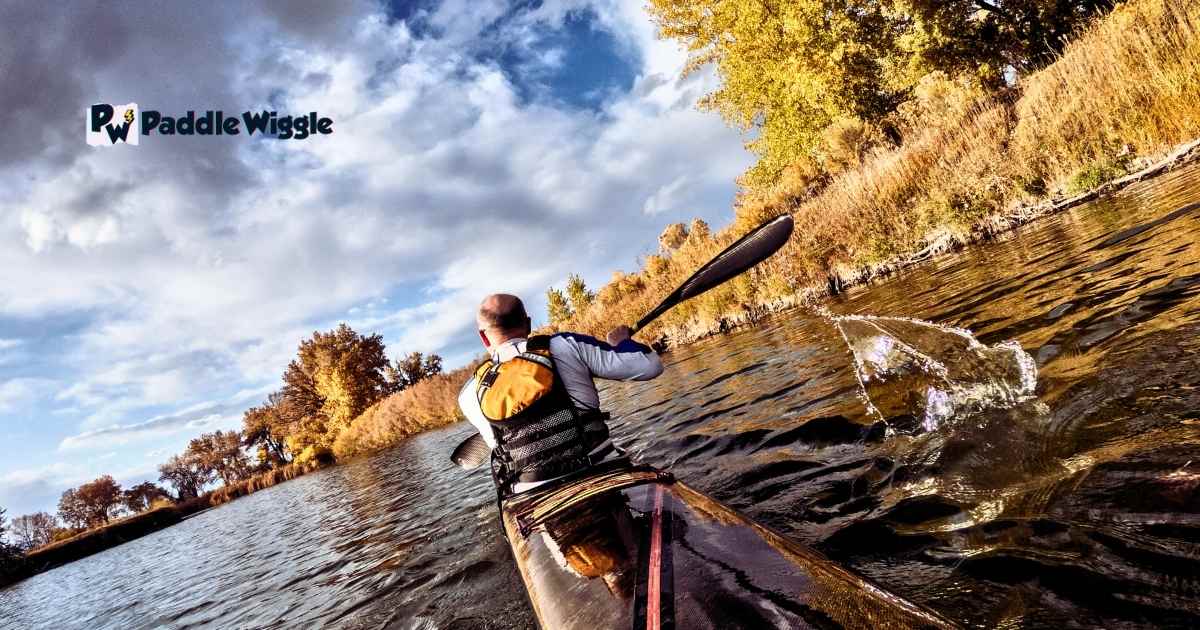

Your skills and how fit you also matter a lot. Here’s why:
Skill Matters: Be An Expert Paddler
The more you kayak and practice, the better you’ll become. Skilled kayakers can keep a steady pace, handle obstacles easily, and adjust to different conditions. This makes them faster when they go on a 10-mile adventure.
Stay Fit: Build Your Strength And Stamina
Being physically fit helps a ton in kayaking. Exercises that strengthen your core, upper body, and heart will help you paddle faster and for longer. So, keep active and stay in good shape for an amazing kayaking experience!
Choosing The Right Kayak And Gear
The things you use for kayaking can affect how fast you go too:
Pick The Right Kayak: Sleek And Fast
The shape and design of your kayak can make a difference. Longer and narrower kayaks usually go faster because they move smoothly through the water. Look for a kayak built for speed and can easily zip through the waves.
Get The Best Paddle: Light And Efficient
Having the right paddle is essential for fast paddling. Choose one that’s lightweight and the right size for you. A good paddle will help you use your strength effectively and paddle faster. So, look for a paddle that feels comfortable and is designed for speed.
Dealing with the Elements
The weather and water conditions can have an impact on your speed too:
Wind Power: Friend Or Foe?
Strong winds can slow you down and make paddling harder. But if the wind is at your back, it can actually help you go faster! So, pay attention to the wind and adjust your paddling accordingly.
Strategies for Faster Kayaking
Paddling Technique
When you’re kayaking, how you paddle plays a big role in going faster. Here are some important things to focus on:
Forward Stroke: Learning the right way to paddle forward helps you keep a steady speed. Keep your paddle close to your kayak and move it smoothly through the water. Try not to make big splashes, as it uses up your energy.
Move Efficiently Through The Water: Pay attention to how you start and finish each stroke. Make sure you quickly get a good grip on the water at the beginning of the stroke and smoothly let go at the end. This helps you move efficiently through the water and reduces any resistance that can slow you down.
Fitness and Conditioning
Being in good shape and having strong muscles can make you a faster kayaker. Here are some things you can do to improve your Fitness for kayaking:
Also read: What Muscles Does Kayaking Work?
Strength Training: Strengthening your muscles can make you more powerful. Try doing exercises like push-ups, squats, and lifting weights. These exercises work the muscles you use when paddling.
Speed Training
If you want to get faster at kayaking, you can include special training sessions in your routine to work on your speed. Here are some ideas:
Intervals: You can do intervals, which means paddling really fast for a short period and then taking a rest. For example, paddle as fast as you can for 30 seconds, then take a break for 1 minute. Repeat this a few times. This helps you practice paddling fast and builds your speed.
Timed Challenges: Set a time goal for yourself, like completing a certain distance in a specific time. Keep track of your progress and try to beat your previous times. This kind of challenge pushes you to paddle faster and helps improve your speed and endurance.
Equipment Selection
The type of kayak and equipment you use can make a difference in how fast you go. Here are some things to consider:
Paddle Selection: It’s important to choose the right paddle. Look for a paddle that is lightweight and the right size for you. This will make it easier to paddle and help reduce tiredness. A well-balanced paddle can also make your strokes more efficient, which means you can go faster.
Minimize Drag And Resistance
To go faster, reducing anything that creates resistance in the water or slows you down is important. Here are some things to keep in mind:
Body Position: Sit up straight with good posture when you’re kayaking. This helps you maintain a balanced position in the kayak and reduces any extra movements that can create drag and slow you down.
Clothing and Accessories: Choose lightweight clothing that fits well and doesn’t catch the wind. Loose or baggy clothing can create drag, so it’s best to wear form-fitting clothes. Also, opt for low-profile accessories that won’t create unnecessary resistance.
Utilize Wind and Currents
The wind and currents in the water can affect your kayaking speed. Here’s how you can work with them:
Currents: In some places, there are currents in the water caused by tides or river flows. These currents can help you move faster. Plan your kayaking trip so that you can take advantage of these currents. If you paddle with the current, it can make your journey easier and faster.
Learn More
Does the kayaker’s weight affect the speed of kayaking?
Yes, the kayaker’s weight can somewhat affect the kayaking speed. The kayaker’s weight can influence the kayak’s overall buoyancy and stability. Generally, a heavier kayaker will cause the kayak to sit lower in the water, increasing the water’s resistance and potentially reducing the speed.
Final Words
In summary, it generally takes about 4 hours to kayak a distance of 10 miles at a speed of 2.5 miles per hour. But remember, the actual time can change depending on different things, like how good you are at kayaking, how fit you are, the weather, the water currents, and the kind of kayak you use.
So, it’s smart to plan ahead and be ready for possible changes in the time it takes based on these factors.

